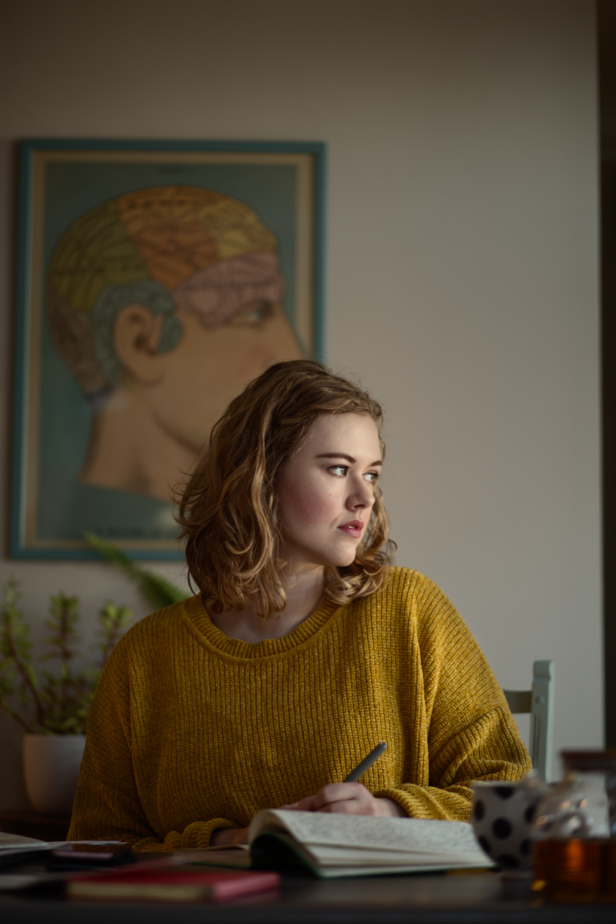Caroline Hardaker’s Composite Creatures is set in a future where pollution has destroyed animal and plant life, and drastically shortened the lifespan of humans. Norah and Arthur (who have saved up enough money to become part of the new privatised NHS) are welcoming a genetically furry bundle of joy named Nut into their home. But not everything is quite what it seems and what starts off as a welcome addition to their home soon turns into a fight for survival. Read our review here.
We spoke to author Caroline Hardaker about privatising the NHS, animals and creating a dystopian future in Composite Creatures…
When did you first come up with the concept for Composite Creatures?
It happened almost by accident. I was asked to write several science fiction poems for a magazine in Edinburgh, and was desperately looking around my living room for inspiration. The stories and poems that affect me the most are the ones that twist elements of reality just a little – so that they’re strange but familiar. Like the earliest episodes of Black Mirror. So I wrote one poem based on my pot plant, one on a tax bill, and then my giant cat waddled in and inspired the poem that ended up becoming Composite Creatures.
At first, there was no way I could’ve imagined that simplistic little poem becoming the novel, but something about it clung to me a bit, and I started to imagine how it might be a short story, then a novella, and then finally – a full-length adult novel. The first drafts were named ‘The Matter Cow’, and it wasn’t until it got its new name, Composite Creatures that it really became what it is today.
If any, what were your inspirations when writing Composite Creatures?
Aside from the strangely human behaviour of my giant cat? Seriously, she was walking around the table on her back legs, using her front paws to manoeuvre her round. She’s quite the cat. I actually dedicated the novel to her, as I used so many of her movements when describing Nut’s behaviour. I felt like a puppeteer.
It’s true that Juno was a great inspiration, but the novel is also inspired by the news. In recent years, so much of it is already like science fiction. Increasing microplastics in the world’s water. Falling fertility rates. Global warming. Disposable face masks washing up on shores around the world. I only needed to speculate about how these things will go for the next generation or so and they became utterly dystopian. We’re not quite at The Road level yet, but we’re not far off.
How would you describe the version of the future in Composite Creatures?
It’s not too dissimilar to today. The story takes place in an England very much like our own, but one where chemicals seep up from the soil and rain down from a lilac sky. If you stand on non-treated earth for too long, the soles of your boots will burn. Around the world, the scatterers work to neutralise and treat the soil so crops will grow. Animals are disappearing, and individuals are being stricken down by a strange blight, referred to as ‘The Greying’. People are disconnecting from nature, and struggle with making choices that might seem obvious to our modern eyes, but you’ll have to read it to understand what those morally grey areas are…
Every aspect of the future in Composite Creatures is based on a current truth. It could all be very possible one day, and we just have to hope and do what we can to prevent it.
It’s probably safe to say that Composite Creatures has a twist – how did you make sure you didn’t give away any clues to the twist throughout the book?
I love the ‘drip drip’ approach. Tiny teases that you’ll miss if you blink. I spent the later drafts seeding the story with little clues and world-building snippets so the reader gets a flavour of how the world feels without it even being explicitly described.
But also, writing in the first person meant that Norah was in complete control of what she shares and doesn’t share. To a degree, the reader lives inside Norah’s head, discovering the dirty reality of her world as she does. To deviate from any twists or surprises, I wanted the reader to question what Norah tells us, how she tells us, and why she’s telling us. When you listen to her story, she sometimes says things that’ll make you do a double-take. Are there psychological tricks involved, or is she just naive? I love that so much.
Basically, I’m a trickster.
Composite Creatures involves the privatisation of the NHS and a possible consequence of this terrible future – why did you include this particular element?
The privatisation of the NHS came up organically mid-way through drafting the novel, and again, it’s totally based on the way the world is going. In a time of pandemics, mutating viruses, and overcrowded hospital wards; the issue of healthcare inequality is more relevant than ever.
Whether you’re in need of a GP to talk about your mental health or a nurse to look at a new mark on your skin – it’s difficult to be certain how your query will be prioritised, or how long you’ll have to wait to see a specialist or hear a comforting voice. And in many places around the world, healthcare is only available to those who can afford it, bringing about societal division – another theme that runs through the novel. In Composite Creatures, corporate greed and healthcare inequality have resulted in a split society. And in a world where chemicals and microplastics are seeping up from the soil and the air is thick with pollutants, healthcare is very much in demand. If this is the way our world is headed, who gets first dibs on treatment in an oversubscribed health service will be a dangerous question.
The book focuses a lot on animals – the loss of them in this future world and with Nut – why have this particular focus within the novel?
I’ve wondered about this myself. When I think about it, no matter what I write – poetry, prose, or scripts – they are more often than not an exploration of our connections to nature and wildlife. I tend to think I’m writing about the human experience first and foremost, but the truth is WE ARE our environment. Whether we live in a rural community, a submarine, or on a different planet – our surrounding environment shapes who we are. We are inseparable from it. Be surrounded by steel long enough and we become hard, sharp, cold.
But on another level, I’ve always been fascinated by animals. Twist the appearance of any creature and it becomes something uncanny and alienesque. There’s also the mystery of how they think, and how they live as they burrow deep below the surface of the earth or soar above us. They exist in a fantastical, folkloric state for me, and this fills me with a perpetual sense of awe.
What are you reading right now?
As ever, I’m reading a few things! I like having a few books on the go so that there’s always a choice of world to lose myself in, no matter how I feel that day.
At the moment I’m reading When the Lights Go Out by Carys Bray, the graphic novel Glass Town by Isabel Greenburg, and I’m dramatically performing Pirate Stew by Neil Gaiman and Chris Riddell to my baby son. I’m perched on the edge of starting The Second Bell by Gabriela Houston and The Dark Crystal novelisation by A.H.C. Smith. I usually have a poetry collection on the pile too, but I’m in between books at the moment and I’m not sure what I fancy…
What’s next for you?
Well, I’m currently working on my second novel, which I should hopefully finish this autumn. I can’t say too much about it, apart from it’s a little more surreal than Composite Creatures. It’s an experimental science fiction-fantasy-literary hybrid. Is that a thing? I have no idea what readers will think of it, but it’s going to be exciting to find out!
Composite Creatures by Caroline Hardaker is out now. Order your copy here.
Above image credit: Credit- Envela Castel.

